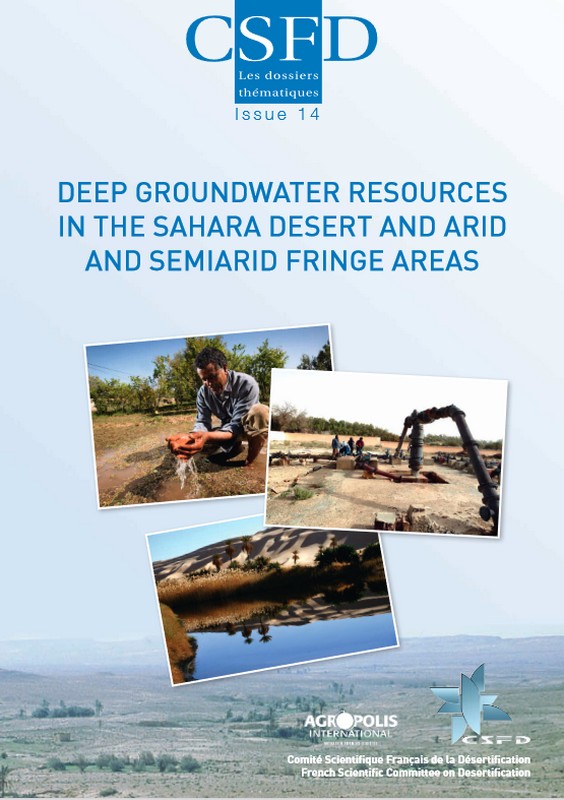95% of the freshwater used by mankind worldwide—mainly groundwater—derives from renewable water resources (i.e. the share of rainfall not taken up by plants or evaporated). The remaining 5% is from the groundwater stock accumulated during excess recharge periods. Globally, this stock is constantly declining due to overexploitation linked to an imbalance between natural or human discharge (especially for crop irrigation) and groundwater recharge, or simply due to the complete absence of recharge. This is the case regarding the large Saharo-Sahelian aquifers, which are often the only substantial water resources available in this region.
These nonrenewable, so-called ‘fossil’, groundwater resources were generally formed during the wet Quaternary Periods. The age and conditions of their recharge have been studied using isotope hydrology (climatic markers and dating) combined with abundant evidence of a vast hydrological system (fossil hydrographic networks, lake sediments) and of human, animal and plant life.
In the Saharan zone, the dwindling rainfall pattern over the last few millennia and the natural discharge of these large aquifers have gradually led to formation of the desert as we know it today. Currently, only a few oases remain that are supplied by groundwater pushed to the surface under pressure. These fragile environments are threatened by the overuse of groundwater resources. Many often transboundary studies have been conducted since the 1970 s to gain insight into the functioning of these aquifers and to come up with ways to manage them sustainably.
This Dossier considers the deep groundwater resources in the Saharo-Sahelian zone in terms of the availability of fresh water worldwide and highlights the importance of preserving them to combat desertification. It focuses on the general features of these major aquifer systems, while underlining their geological and paleohydrogeological specificities. The study methods are then described based on three examples of major deep aquifer systems: the Chad Basin, the Nubian Sandstone Aquifer System (NSAS) and the North-Western Sahara Aquifer System (NWSAS). Finally, the rational management of these large-scale systems and transboundary aspects are addressed while outlining the initiatives undertaken on the NSAS and NWSAS.
| A paper copy is available on request from the CSFD secretariat at secretariat-csfd@agropolis.fr |

Download the thematic file french version




